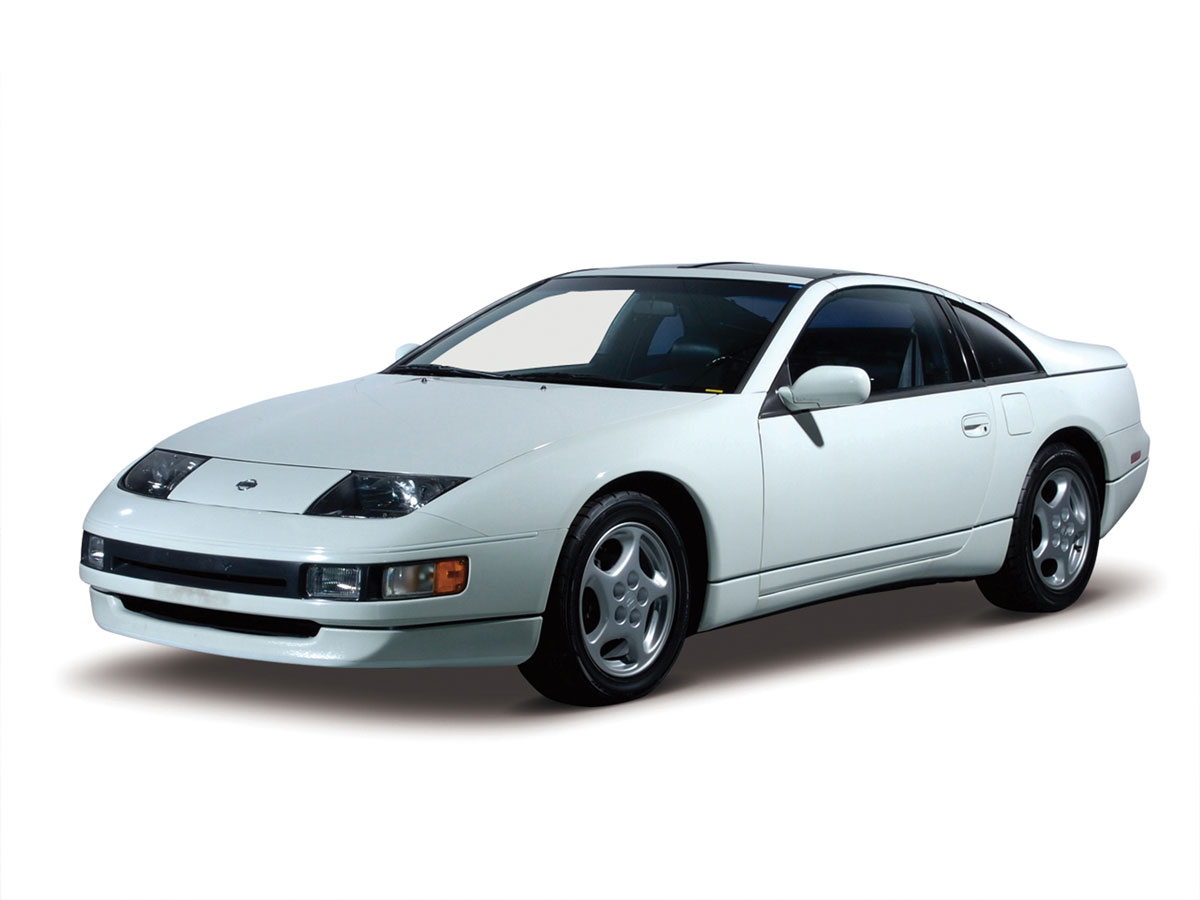
The early 1990s is not a period fondly remembered by either auto-styling aficionados or performance enthusiasts. This was the era of the inglorious 250-horsepower Corvette, when a new Ferrari infamously got outrun by a stock GMC pickup, and Giorgetto Giugiaro was slumming with the likes of Subaru. From this time of automotive derelicts, however, came one of Nissan’s greatest machines.
The Z32, as it’s known among the Nissan cognoscenti, was sold here for seven years, from 1990 to ’96. It was as easy on the eyes as it was good for the soul, a car that elegantly straddled the line between pure sports car and grand tourer. Eventually, its rising cost and inherent complexity derailed sales, and it disappeared from the U.S. in the same tsunami that took out the rest of the Japanese sports-car market. Nissan brought the Z car back a few years later, but for many enthusiasts, the fourth generation remains the iconic Z.
Tale of two
The Z32 300ZX was really two different cars, with two engine choices as well as two different wheelbases. Both engines were 3.0-liter V6s, with the naturally aspirated VG30 producing 222 hp and 198 foot-pounds of torque. The 300ZX Twin Turbo added two turbochargers and two air-to-air intercoolers to produce a then-remarkable 100 horsepower per liter of displacement. Those 300 horses were 50 more than the standard pre-’92 C4 Corvette and even topped the Ferrari 348, which only managed 296 Italian horses from its 3.4-liter V8.
Two transmissions could be paired with whichever engine you chose. Either a 5-speed manual or a 4-speed automatic directed torque rearward to a viscous limited-slip differential.
A standard 2-seater, the 300ZX was also available as a 2+2, which added five inches to the 96.5-inch wheelbase, as well as a pair of small rear seats. Short-wheelbase Z32s came in base hard top, T-top or convertible models. For some inexplicable reason, U.S.-spec Twin Turbos could only be had in the shorter wheelbase, and only with a T-top roof.
Those with well-honed Z-car faculties can distinguish a 2+2 from a 2-seat 300ZX at a glance, but it is not easy. They are virtually identical in shape, with only subtle proportional differences revealing the extra length.
But there are giveaways: The fuel-filler door is between the rear wheelwell and the driver’s door on the short-wheelbase cars, while the 2+2 fuel-filler door is aft of the rear wheelwell on the driver’s side. Less obvious are the 2-seater’s smaller rear quarter windows, which have a trailing edge that finishes nearly vertically into the Z’s waistline. On the 2+2, the quarter window’s trailing edge intersects the waistline closer to 45 degrees.
Obviously, you want a Twin Turbo
In addition to the extra power, the Twin Turbo added two unique features: driver-adjustable suspension damping and rear-wheel steering. The electronically controlled dampers could be toggled between Tour and Sport modes via a switch on the center console. Rear-wheel steering, called Super HICAS (High Capacity Actively Controlled Steering), was active only at medium and high speeds. In mid-speed scenarios, the system steered the rear wheels opposite the fronts at turn-in and then in the same direction as the fronts a split second later. At higher speeds the rears turned the same direction as the fronts.
Twin Turbo Z32s could hit 60 mph from a standstill in as little as 5.6 seconds. The normally aspirated cars required an additional second or so. But it wasn’t just the Z’s acceleration that people loved; rather, it was the coupe’s road feel and driving dynamics that captured drivers.
Its steering, in particular, drew clichéd praise as “surgically precise” when compared to the Corvette, with car-magazine testers also lauding its perfect on-center feel, lack of kickback and world-class straight-line stability. It also trounced the Mitsubishi 3000GT VR-4, Porsche 968, Mazda RX-7 and Dodge Stealth R/T in various comparison tests. If the Z32 had any demerits, it was its rather heavy weight — 3,540 pounds — and modest grip, at 0.89g.
Truly affordable
One consideration in seeking out this era of 300ZX is that these cars, like most ’90s sports cars, are likely to suffer from deferred maintenance in the hands of third or fourth (fifth, sixth…) owners. Twin Turbo Z32 models are known for high underhood heat, and this can result in brittle wiring harnesses, cracked hoses and sometimes even faulty fuel injectors. Otherwise, the engine is pretty robust. These cars can be difficult to work on, as the same tight packaging that leads to high underhood heat makes some jobs difficult. This is particularly true for working on the turbos, which is best done with the engine removed.
Both versions of 300ZX appear with increasing regularity in online auctions, where sales are nowhere near the stratospheric hammer prices of its nemesis, the fourth-generation Toyota Supra. Though the Z32 may never catch up, values have been climbing. Mid-mileage Twin Turbos in good condition can be had today for $25k–$30k. Naturally aspirated cars are half that much. Now is your chance. ♦
Help! I subscribed, I logged in and I still can’t open the article I want to read.